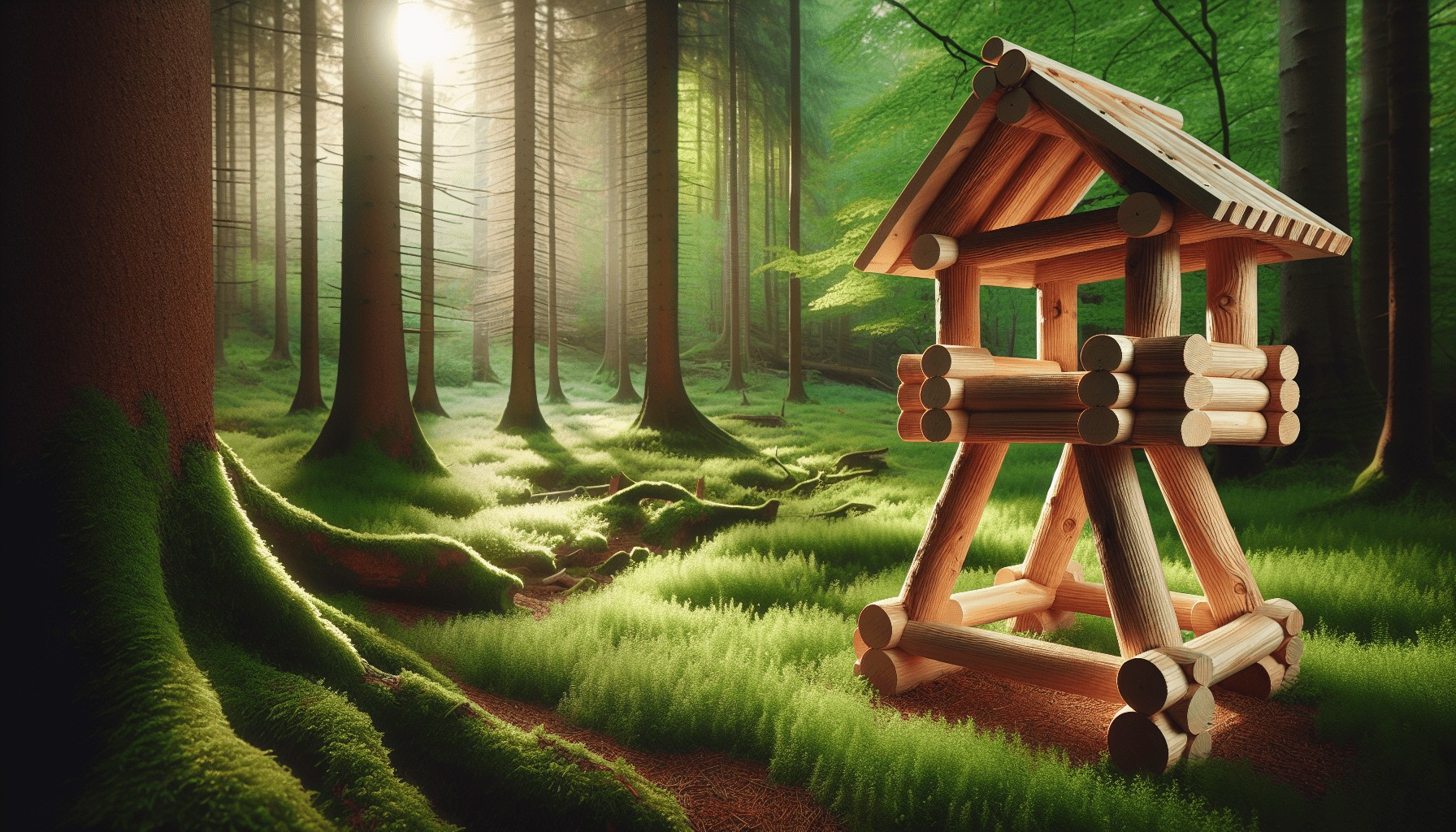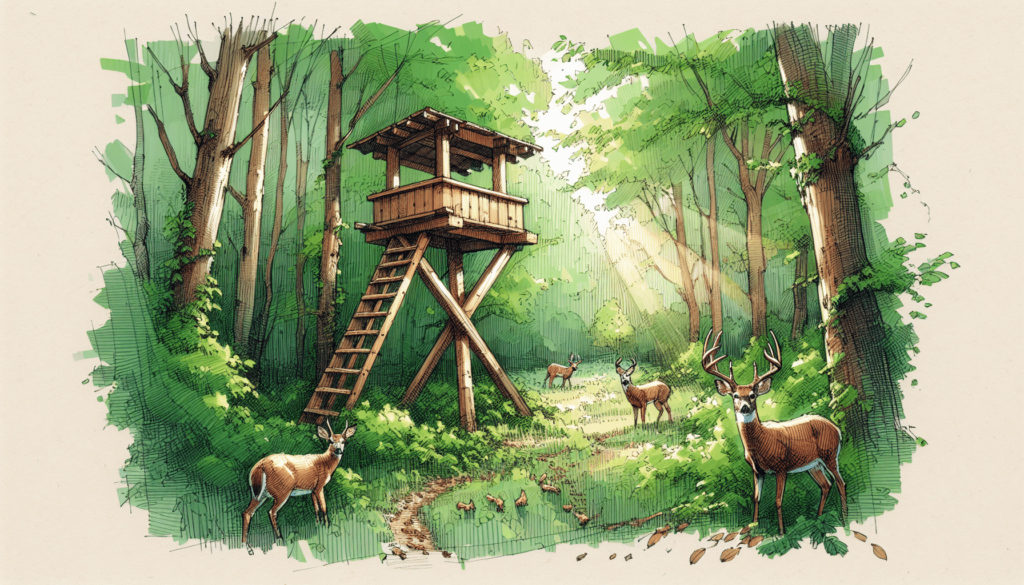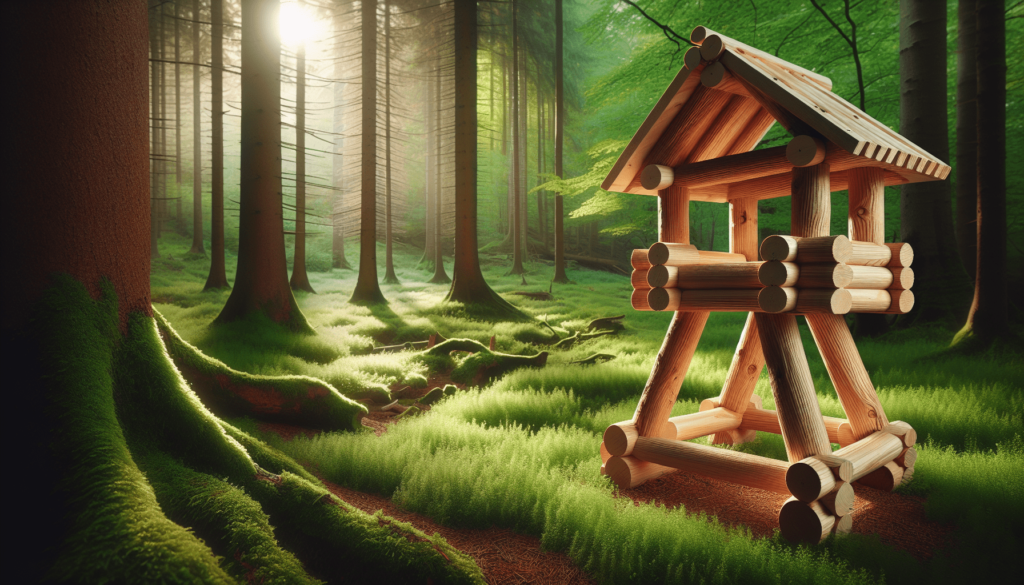
Have you ever watched deer gracefully wander your property and thought about how to attract them even more? A sturdy DIY deer feeder stand could be just the solution you’re looking for. Not only does it serve its primary function of holding the feeder, but it also enhances stability and security, ensuring that your feeding efforts are effective and safe from potential disturbances.

Understanding the Importance of Deer Feeders
Feeding deer not only allows you to observe their beauty, it also encourages healthier populations. By providing a consistent food source, you ensure that these magnificent creatures can thrive, especially in harsh environmental conditions.
Deer feeders can help in several ways:
- Nutritional Support: Offering a balanced diet helps deer maintain their health.
- Territory Attraction: Placing feeders in the right locations can attract deer to your property.
- Enhanced Viewing: With a feeder, you create an opportunity for observing wildlife.
When you understand how a simple feeder can impact deer health and your viewing experience, it becomes clear why sturdy supports are essential.
Choosing the Right Type of Deer Feeder
Before constructing your stand, consider the type of deer feeder you’ll be using. Different feeders have varying weight, designs, and feeding mechanisms. Let’s look at some common types.
Gravity Feeders
Gravity feeders dispense food as deer eat, allowing multiple deer to feed simultaneously. They tend to be simple in design and easy to refill.
Mechanical Feeders
These feeders use timers to release food at specific intervals. They require power sources or batteries and may have added features such as adjustable feed amounts.
Trough Feeders
Trough feeders are wider and can hold more food, ideal for multiple deer. They’re usually designed for stability, so finding or constructing a sturdy stand for them is crucial.
Selecting Materials for Your DIY Deer Feeder Stand
The durability and stability of your deer feeder stand will depend heavily on the materials you choose. Here’s a breakdown of popular materials and their qualities.
| Material | Pros | Cons |
|---|---|---|
| Pressure Treated Wood | Good durability, resistant to decay | Can be heavy and hard to transport |
| PVC Pipe | Lightweight, easy to cut | May not withstand strong winds |
| Metal | Extremely sturdy, long-lasting | Can be expensive and heavy |
| Composite Boards | Resilient to weather, splinter-resistant | More difficult to work with |
Choosing the right material based on your local environment and the expected weight of the feeder will ensure a successful build.
Tools You’ll Need
Having the right tools is essential for an efficient construction process. Here’s a list of common tools you might need for your project:
- Power Drill: For making holes and screws.
- Saw: Either hand saw or power saw, depending on your material choice.
- Level: Ensures that your feeder stand is perfect and stable.
- Measuring Tape: Accurate measurements prevent issues later in the project.
- Screws and Fasteners: To hold everything securely in place.
With the right materials and tools in mind, you’re ready to begin building a sturdy deer feeder stand.
Designing Your Deer Feeder Stand
A solid design is crucial to guarantee that the stand can endure weather conditions and the weight of the feeder. Here are some design elements to consider:
Height
The height of your feeder stand should accommodate deer while keeping the feeder out of reach from smaller animals. Typically, 3 to 5 feet is ideal, depending on the type of feeder.
Base Width
Ensure that your base is wide enough to support the stand and prevent it from tipping over. A wider base offers better stability, especially in windy conditions.
Supports
Using diagonal supports can increase the overall strength of your stand. These cross braces can prevent wobbling and add security to the structure.
Design Inspiration
Feel free to incorporate your creativity into the design. Consider adding features such as:
- A roof to protect food from rain
- A removable tray for easier cleaning
- Add decorative elements that blend with the environment

Step-by-Step Guide to Building Your Deer Feeder Stand
Now that you’re clear on materials, tools, and design, it’s time to put it all together. Here’s a straightforward, step-by-step guide.
Step 1: Gather Your Materials
Begin by collecting all necessary materials as outlined earlier. Organizing these will facilitate smoother progress throughout your building process.
Step 2: Measure and Cut Your Wood
Take precise measurements based on your design. Always measure twice before you cut to avoid wasting materials!
Step 3: Construct the Base
Start by assembling the base of the stand. Using sturdy screws, connect the wooden pieces in a rectangular shape. Be sure to check that it’s level.
Step 4: Attach Vertical Supports
After the base is secure, attach the vertical supports at each corner of the base. Make sure they’re straight and secure, as these will hold the feeder.
Step 5: Add Diagonal Supports
To increase stability, attach diagonal supports between the vertical posts and the base. This design helps counteract lateral movements.
Step 6: Secure the Feeder
Once the frame is complete, secure the feeder on top. Depending on the design, you may need to use brackets or screws for added stability.
Step 7: Final Touches
Add any additional features like a roof or tray, and finish by giving the stand a weather-resistant treatment to prolong its life. You can use paint, sealant, or varnish, depending on the material.
Maintaining Your Deer Feeder Stand
A sturdy deer feeder stand requires minimal maintenance, but a few regular checks can prolong its lifespan. Here’s what to consider:
Seasonal Inspections
Each season, inspect your feeder stand for:
- Cracks or wear from harsh weather.
- Loose screws or fasteners that could lead to instability.
Cleaning
Keeping the feeder itself clean will prevent mold and help maintain deer health. Plan regular cleanings, especially after heavy use.
Refilling the Feeder
Make a routine of refilling the feeder to keep it a constant food source. Check for pests or spoilage while doing this.
Benefits of a Sturdy DIY Deer Feeder Stand
Investing your time into building a sturdy deer feeder stand not only enhances the experience for you, but it also provides benefits for the deer. Here’s how:
Increased Deer Traffic
With a reliable food source, you’ll notice more deer frequenting your property. The stability of your feeder will ensure they feel safe while feeding.
Enhancing Wildlife Observation
A solid, well-placed feeder allows for wonderful wildlife watching experiences. You might find yourself captivated by their behavior close up.
Ecological Benefits
In areas where food is scarce, a well-maintained deer feeding program can support local wildlife populations, contributing positively to the ecosystem.
Common Issues and Solutions
Even the best-made deer feeder stands can face issues. Understanding common problems and their solutions can help you maintain your stand.
Problem: Feeder Being Knocked Over
Solution: Ensure the base is wide and secure. Add more diagonal braces for additional support against wind.
Problem: Deer Not Coming Around
Solution: Try moving the feeder to a more secluded or frequented area. Sometimes, location is key for attracting deer.
Problem: Pests at the Feeder
Solution: Use a metal feeder, and keep it clean to deter pests. You might also consider setting traps for unwanted animals.
Conclusion: Enjoy the Bounty of Nature
Creating a sturdy DIY deer feeder stand is an excellent way to enjoy the beauty of nature while supporting local wildlife. With a little time and dedicated effort, you can build something that will stand the test of time and attract deer to your area.
Remember, each season brings its own challenges, but with proper design and maintenance, you’ll find that the rewards far outweigh the efforts. Your custom feeder stand will become a gathering point not just for deer, but perhaps for friends and family excited to witness the wonders of nature together. Take pride in your handiwork, knowing that you’re enhancing the stability and security of feeding solutions on your property.





